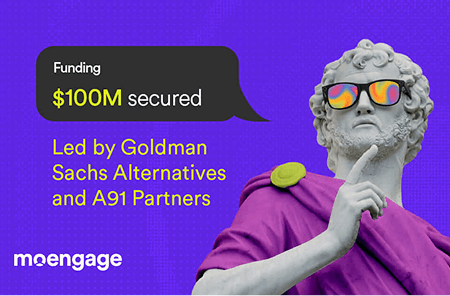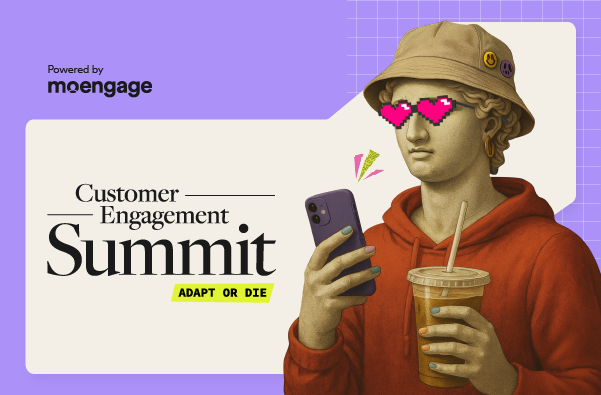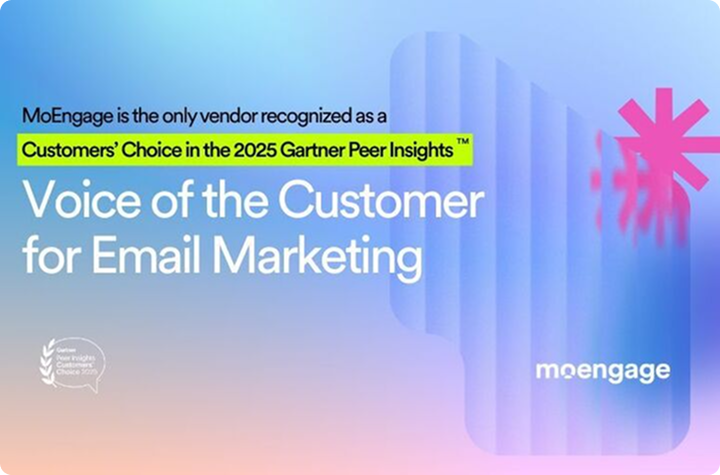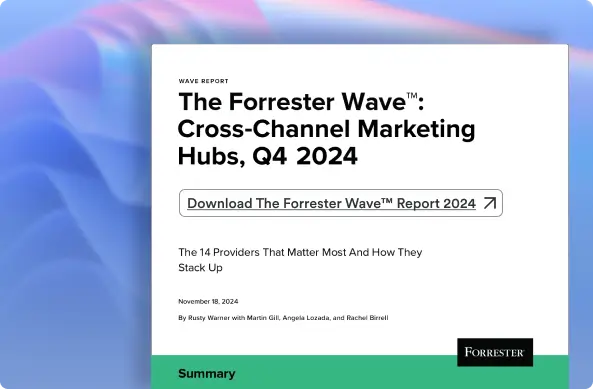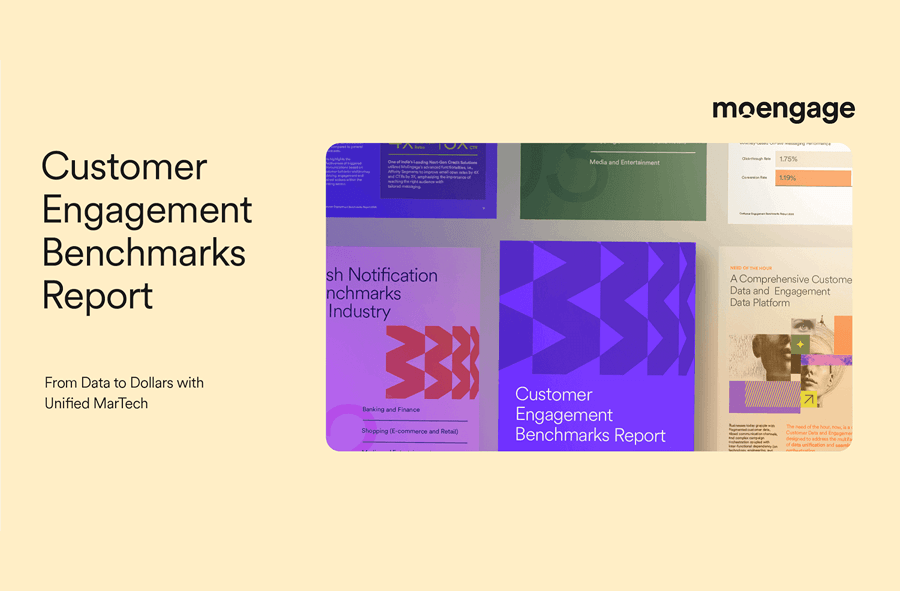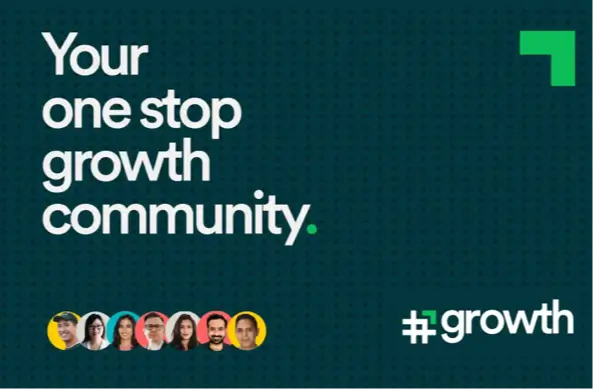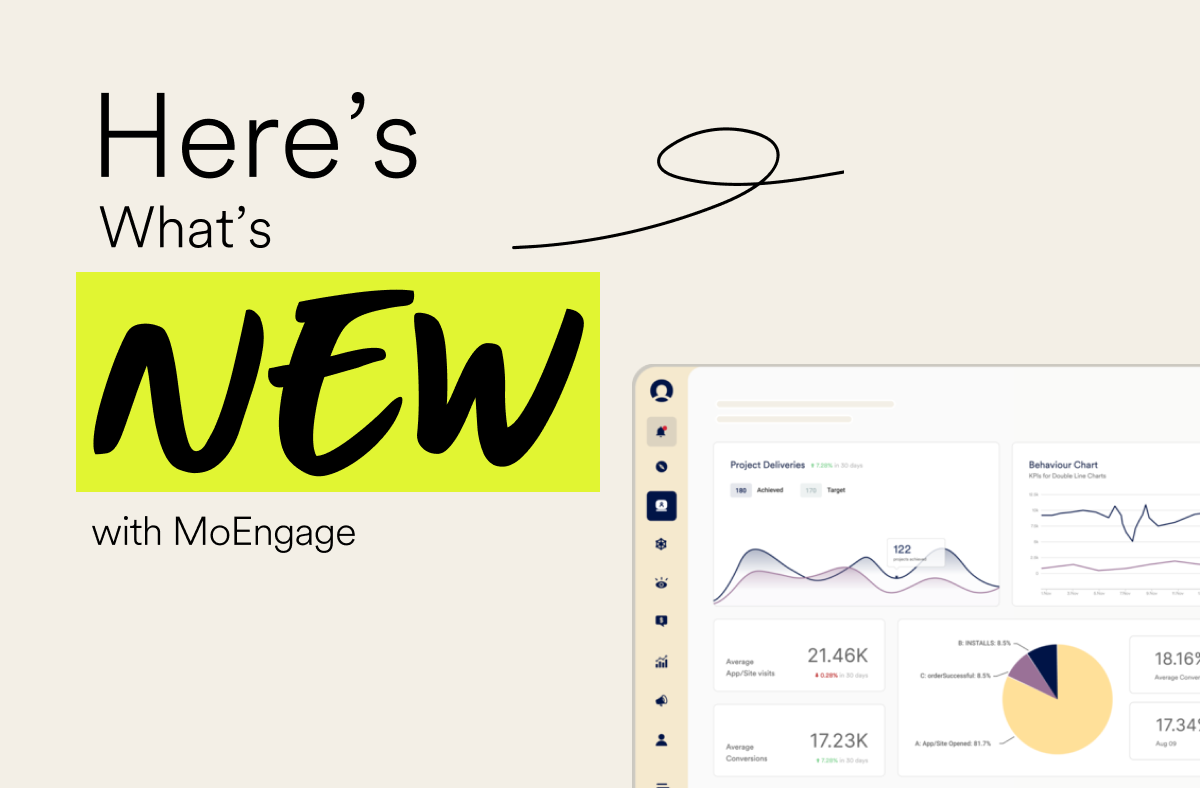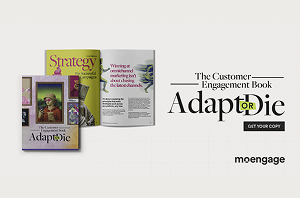Transforming E-commerce: How JioMart is Pioneering the Future of Retail in India
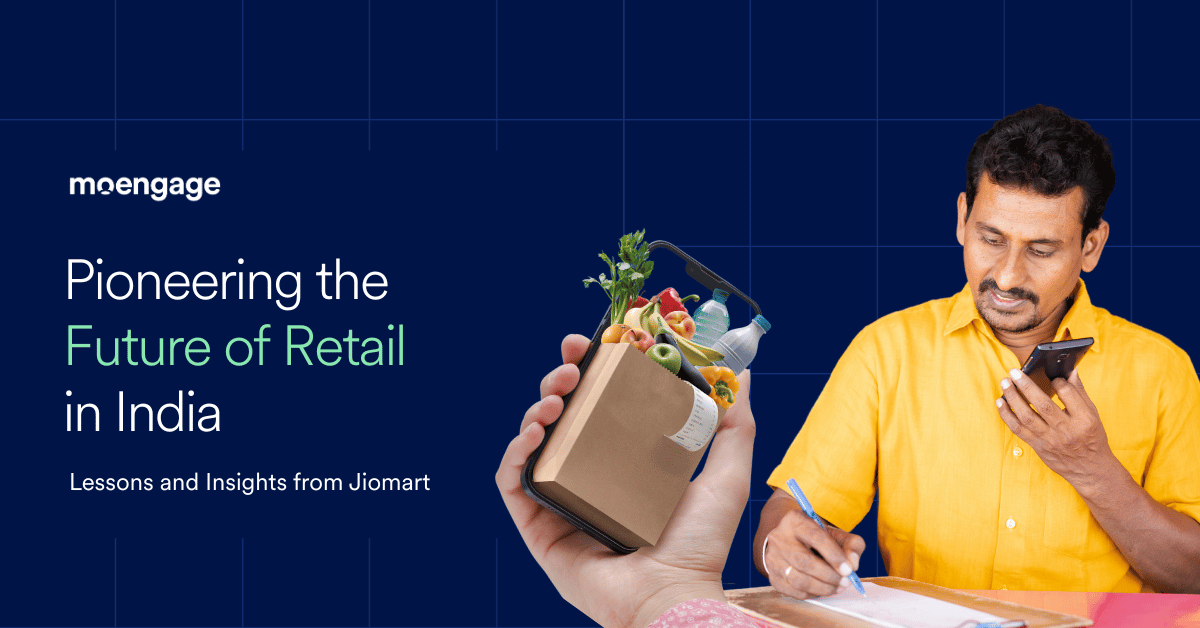
Reading Time: 11 minutes
Imagine a world where your neighborhood Kirana store owner can compete with global E-commerce giants. Where an artisan in a remote village can showcase their craft to millions. Where technology isn’t just a tool, but a great equalizer.
Sounds like a utopian dream? Not anymore, as it’s the emerging reality of Indian digital commerce.
Here are some numbers that tell a story:
By the end of 2025, India will have:
- 900 million smartphone users (up from 500 million in 2022)
- 55% of its population under 30
- $111 billion digital economy by 2024 (NASSCOM Report, 2023)
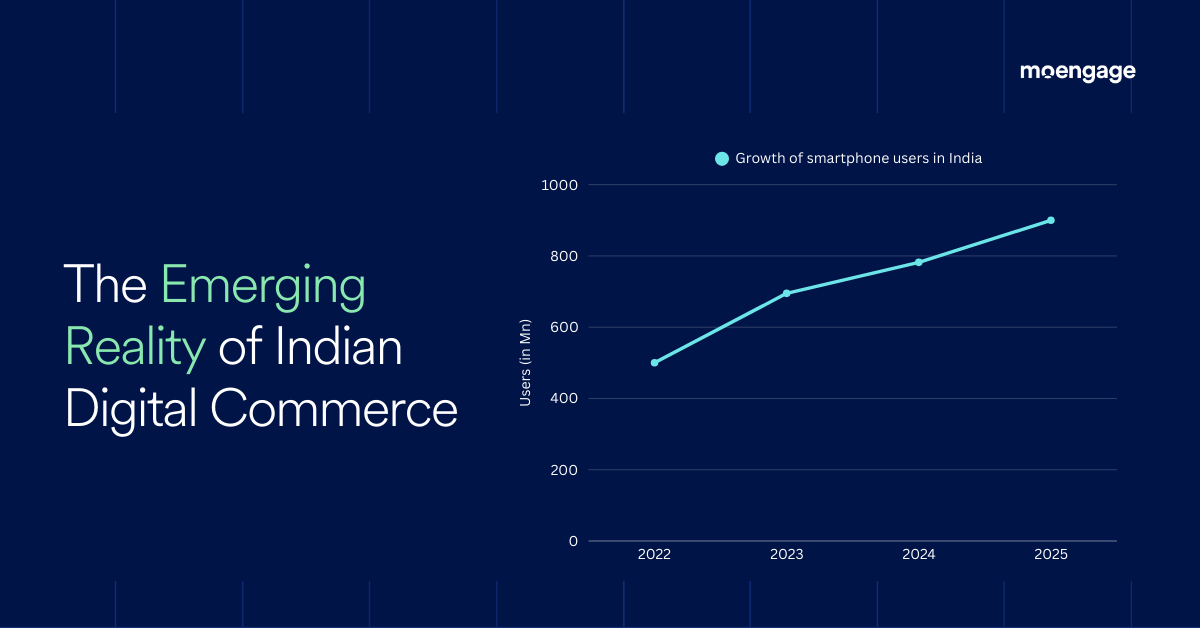
But behind this transformation lies a bigger challenge—how do brands truly engage with customers in a digital-first world?
This very question took center stage in a recent conversation with Sandeep Varaganti, CEO of JioMart, where he unpacked what it really takes to bridge the gap between technology and meaningful customer connections.
His insights shed light on how brands must rethink engagement, moving beyond transactions to building lasting relationships. Let’s dive in.
The Fragmented Customer Journey: Where Traditional Approaches Fall Short
Picture this: A decade ago, online shopping felt like science fiction in India. There was slow internet, skeptical shopkeepers, and a massive trust deficit. Ordering something online was like attempting a complex math problem blindfolded.
Fast-forward to today—we’ve gone from 1% e-commerce penetration to nearly 5%, racing towards 10%. More than just growth, this is a cultural uprising, powered by smartphones, ambition, and a uniquely Indian spirit of jugaad.
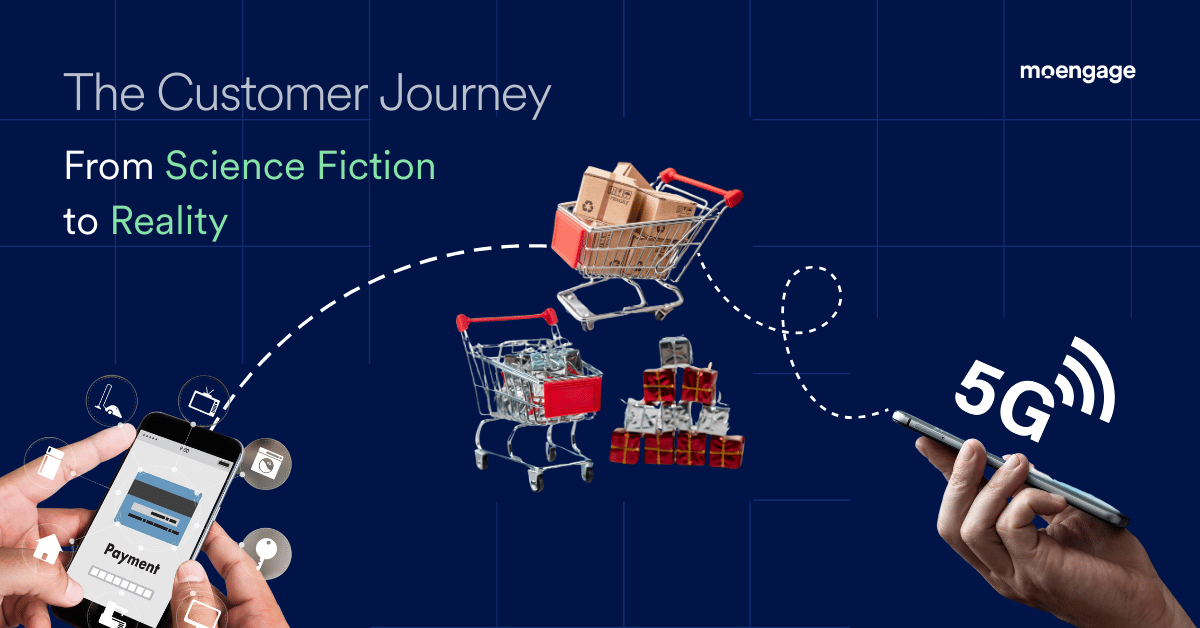
The Real Game-Changer is Customer Engagement
But here’s the million-dollar question: In this digital tsunami, how do brands actually connect?
It’s not about technology. It’s about conversation. It’s about making every customer feel like they’re walking into their favorite local store, even when they’re scrolling on a smartphone.
The Connectivity Conundrum
A decade ago, Sandeep Varaganti vividly recalls the harsh realities of digital commerce in India:
- No reliable internet in key business regions
- Low technological sophistication among sellers
- Massive trust deficit among consumers
- Extreme difficulty in convincing businesses to go digital
“When we were onboarding small and medium businesses to sell online,” Sandeep shares, “it used to be challenging. There was no fast internet in the places where they operated, and the technological sophistication of these sellers and retailers was not very high.”
These challenges set the stage for a profound reimagining of how businesses could connect with customers.
The Multichannel Challenge
As the digital landscape evolved, so did the approach to customer connection. JioMart’s secret? They didn’t just build an E-commerce platform. They built a digital relationship engine.
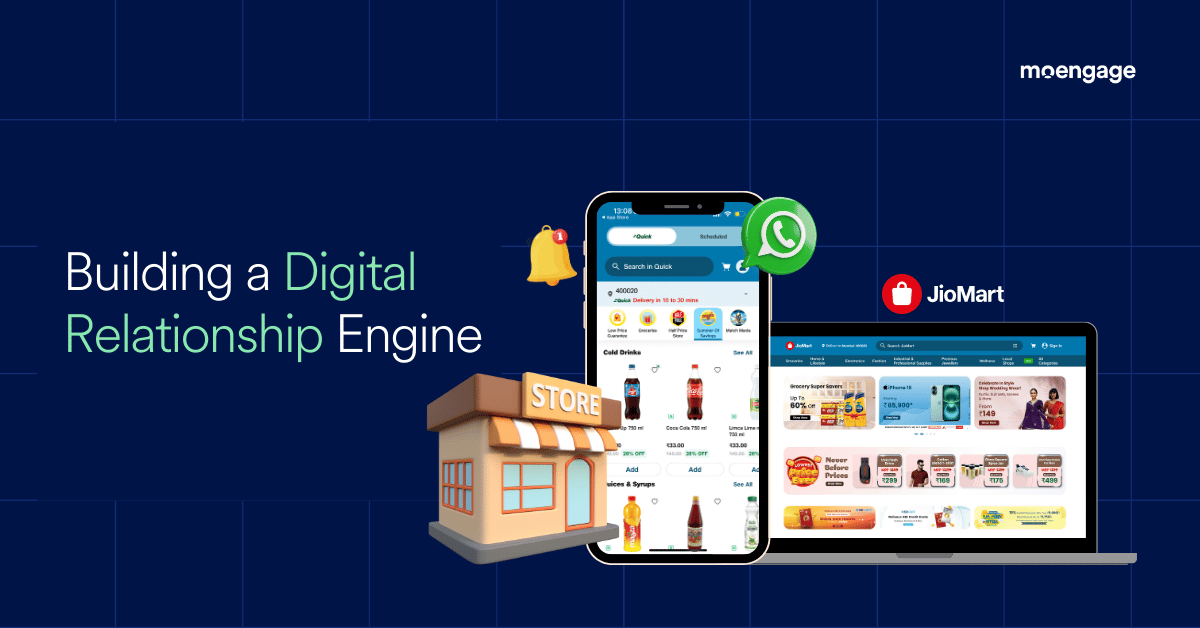
The thing is— a customer doesn’t just want to buy. They want to be understood. They want an experience that feels personal, immediate, and seamless. Whether they’re clicking through WhatsApp or walking into a physical store, the experience should be identical.
This vision of seamless interaction directly addresses the fragmentation that once plagued Indian digital commerce.
The Scale of Transformation
The challenges of connectivity gave birth to a new understanding of customer engagement. Consider the critical pain points that need solving:
- Inconsistent pricing between online and offline channels
- Disconnected inventory management
- Lack of personalized customer communication
- Inefficient logistics and delivery experiences
With smartphone penetration jumping from 20-30 crores to 60-70 crores, and E-commerce penetration growing from near-zero to nearly 5%, the landscape has dramatically transformed.
And that’s where the real magic of modern customer engagement begins.
The solution isn’t about more technology. It’s about smarter, more human technology that understands the nuanced needs of Indian consumers – a technology that bridges gaps, not creates them.
So, what does this all mean?
The digital commerce revolution in India isn’t just about numbers or technological advancements—it’s about a radical shift in how businesses and consumers connect. It’s about breaking traditional barriers and redefining customer relationships in a way that feels personal, seamless, and, most importantly, human.
And JioMart? It’s not just playing the game; it’s rewriting the rules.
Let’s unpack how.
Building Real Customer Relationships Beyond Transactions
For years, digital commerce in India was mostly about transactions—click, buy, deliver. But as Sandeep Varaganti puts it, “It’s not just about selling products online. It’s about making sure customers feel connected, whether they’re on WhatsApp, inside a store, or browsing an app.”
Think about it. People don’t wake up thinking, “Let me engage with an e-commerce platform today.” They think, “I need fresh vegetables, a new phone, and this delivered fast.” The brands that get this—that move beyond pushing products to actually understanding how people shop and what they expect—are the ones that thrive.
JioMart is proving that customer engagement isn’t about forcing people onto a platform. It’s about meeting them where they already are.
How JioMart is Making Digital Feel Personal
- Breaking the Online vs. Offline Barrier
“Customers don’t think in channels. They just want convenience.” If a shopper buys from JioMart online today, they shouldn’t feel like they’ve entered a different world when they walk into a Reliance Smart store tomorrow. That’s why JioMart ensures pricing, inventory, and offers stay consistent across both worlds.
- WhatsApp Commerce: Shopping Without the Extra Steps
“People don’t want to download another app; they just want to shop where they already are.”
And where are they? WhatsApp.
With over 500 million WhatsApp users in India, JioMart lets people browse, order, and track deliveries—all within a simple chat. No friction, no extra steps. Just shopping the way it should be.
Sandeep revealed that:
“We are by far the largest E-commerce setup leveraging WhatsApp, and the growth rates have been significant. In just six months, the size of the business grew nine to ten times.”
- Personalized Shopping at Scale
India isn’t a one-size-fits-all market. A customer in Bangalore doesn’t shop the same way as someone in Patna. JioMart taps into AI-driven insights to recommend products based on location, shopping history, and even seasonal trends. The goal? Make shopping feel like it’s been tailored just for you.
This is more than E-commerce. It’s about bringing back the personal touch that digital shopping lost.
And the brands that understand this shift will be the ones that win.
The Engagement Equation
Imagine a world where:
- Customers don’t just buy products
- They have conversations
- They feel understood
- Every interaction feels like a personalized interaction
This is where customer data and engagement platforms (or CDEPs) like MoEngage become game-changers. By providing intelligent, context-aware engagement tools, brands can transform generic interactions into meaningful conversations.
Trust: The Biggest Currency in Digital Commerce
No matter how advanced digital commerce becomes, one truth remains: People buy from brands they trust. In India, this trust isn’t built overnight—it’s earned through reliability, consistency, and a genuine connection with customers.
Sandeep puts it perfectly:
“The conversational flow is crucial for Indian consumers. They want to feel there’s an interaction, not just a transactional, technologically driven experience”
Think about it—what makes someone return to a brand? It’s not “discounts”. It’s not flashy ads. It’s the experience. The confidence that their order will arrive on time. The ease of getting help when something goes wrong. The feeling that they’re valued, not just another transaction.
The Pillars of Meaningful Customer Engagement
- Seamless, Real-Time Communication: The best customer experiences don’t wait. Whether it’s a price drop, a restocked item, or an abandoned cart, engagement needs to happen in the moment. Brands that get this right don’t just send generic push notifications; they send context-aware, personalized messages that actually add value.
- Proactive Problem-Solving: Engagement isn’t just about selling—it’s about being there before the customer even realizes they need help. Imagine ordering groceries, and before you even check the delivery status, you get a message: Your order is running 10 minutes late, but we’ve added a ₹50 credit for the inconvenience. That’s how trust is built.
- Hyper-Personalization at Scale: Customers today expect experiences tailored to them—not based on broad segments but on individual behavior. This goes beyond just knowing their name. It’s about understanding their preferences, shopping habits, and even when they’re most likely to engage.
The Role of Intelligent Engagement Platforms
To achieve this level of personalization and real-time engagement, brands are turning to platforms like MoEngage, which enable businesses to connect with customers across multiple touchpoints, analyze behavior, and deliver truly relevant experiences at scale.
At the end of the day, customer engagement is not about technology—it’s about making customers feel heard, understood, and valued. The brands that master this will not only win sales but will earn something far more valuable—loyalty.
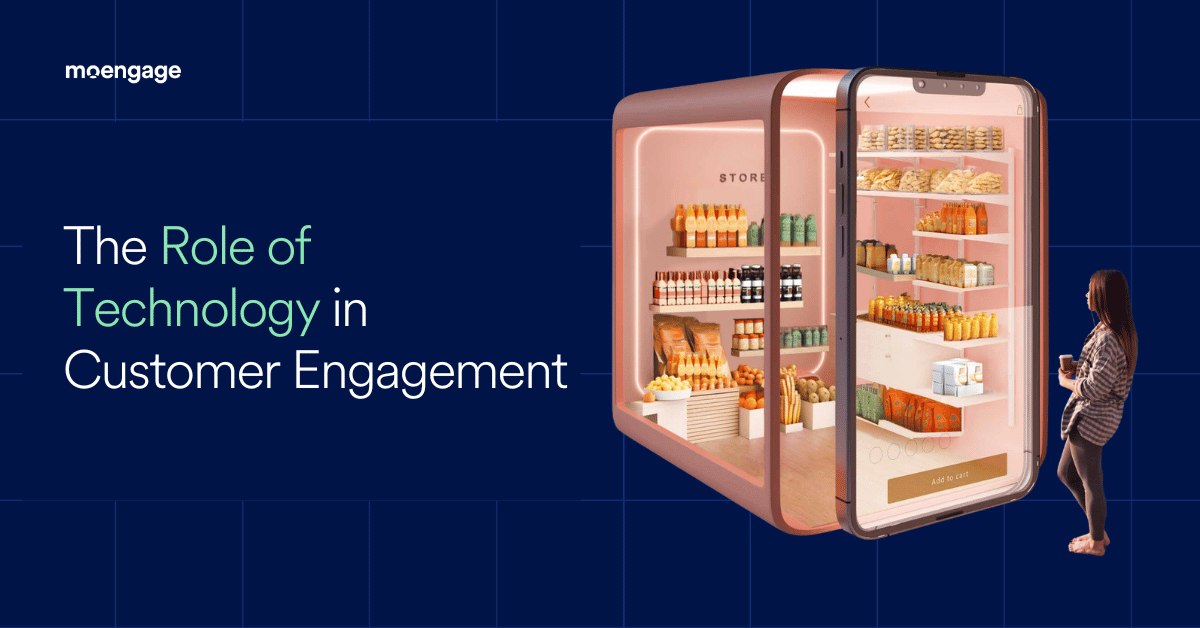
From Transactions to Relationships: The Evolution of Customer Loyalty
For years, businesses measured success by how many people bought something. But the real question isn’t who buys today—it’s who keeps coming back?
Acquiring a customer is one thing, but retaining them—that’s where real value is created. The brands that win are the ones that think beyond transactions and focus on relationships.
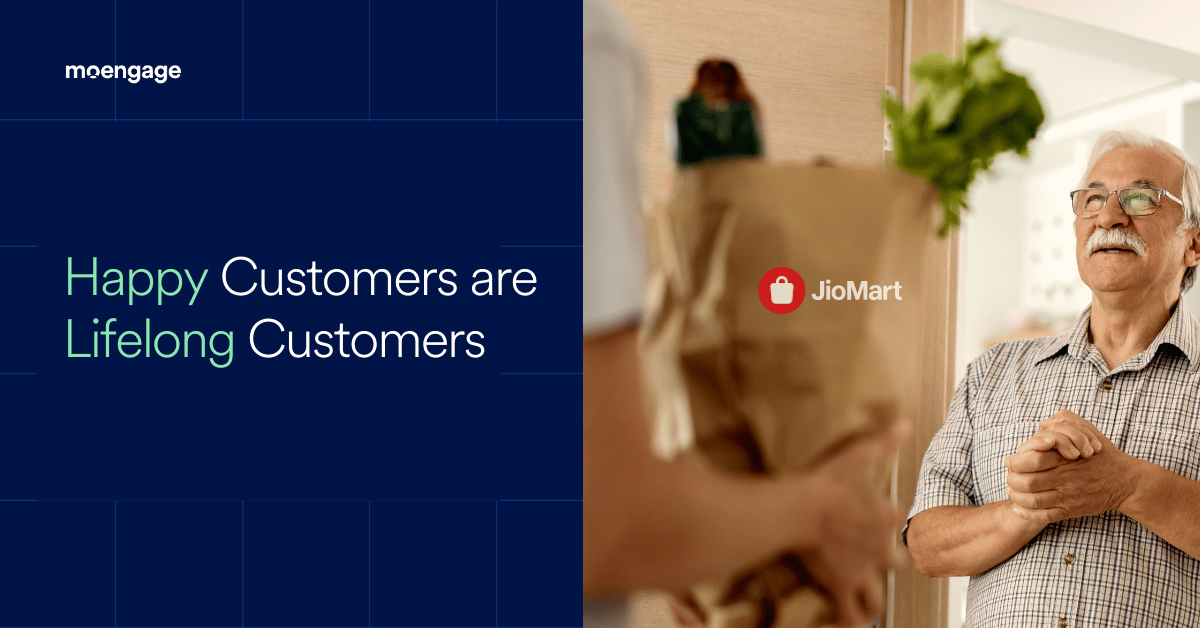
The Death of One-Size-Fits-All Loyalty
Traditional loyalty programs—points, cashback, discounts—aren’t enough anymore. Customers don’t just want rewards; they want recognition and relevance.
Think about it:
- A repeat buyer shouldn’t get the same generic offers as a first-time visitor.
- A high-value customer shouldn’t have to wait in line for support.
- A loyal shopper should be rewarded in ways that feel personal, not just programmatic.
Building Emotional Loyalty: The New Competitive Edge
It’s not just about how much people buy—it’s about how they feel when they engage with your brand. Emotional loyalty comes from:
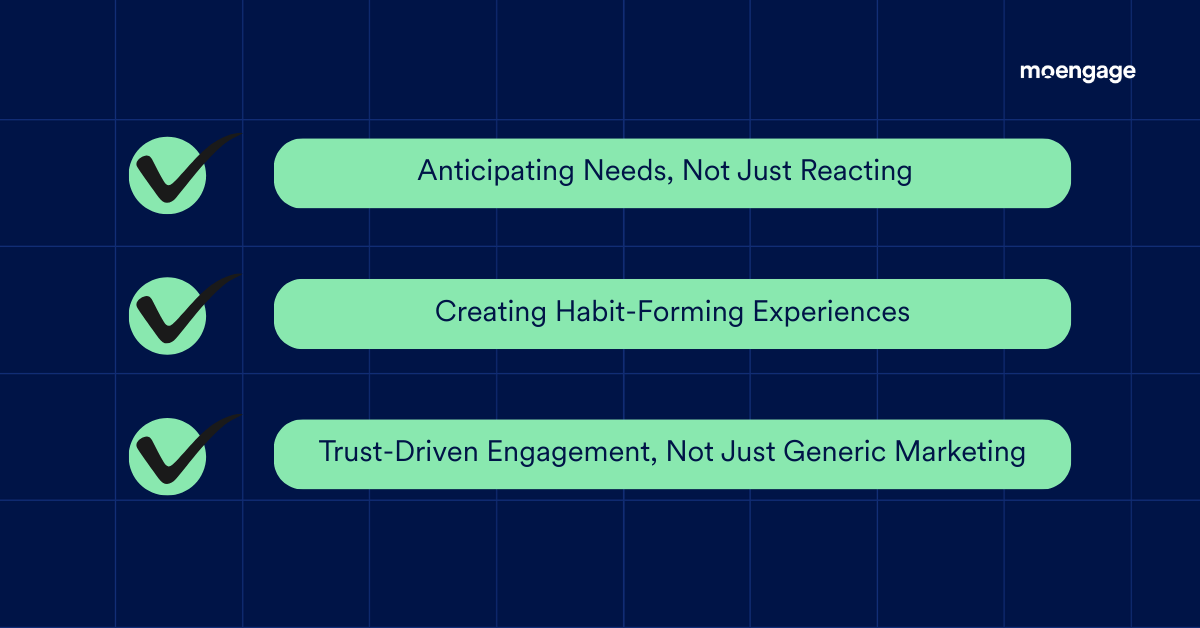
- Anticipating Needs, Not Just Reacting
- The best brands don’t wait for customers to reach out—they predict needs before they arise.
- Imagine opening an app and seeing a pre-curated cart with your frequently bought items, saving you the hassle of searching. That’s thoughtful engagement.
- Creating Habit-Forming Experiences
- Think about why people instinctively check WhatsApp, Instagram, or even their favorite shopping app. It’s not just utility—it’s habit.
- Brands that consistently provide value, whether through useful content, timely offers, or seamless service, become part of a customer’s routine.
- Trust-Driven Engagement, Not Just Generic Marketing
- Customers today are hyper-aware of brands that over-communicate or push irrelevant offers.
- The key is to engage at the right moment, with the right message—whether it’s a restock alert, an exclusive drop, or a simple thank you after a purchase.
How Leading Brands Are Cracking the Loyalty Code
With AI-driven insights and automation, CDEPs like MoEngage are helping brands understand individual customer journeys and tailor experiences accordingly. This isn’t just about selling better—it’s about building lasting connections that turn first-time buyers into lifelong customers.
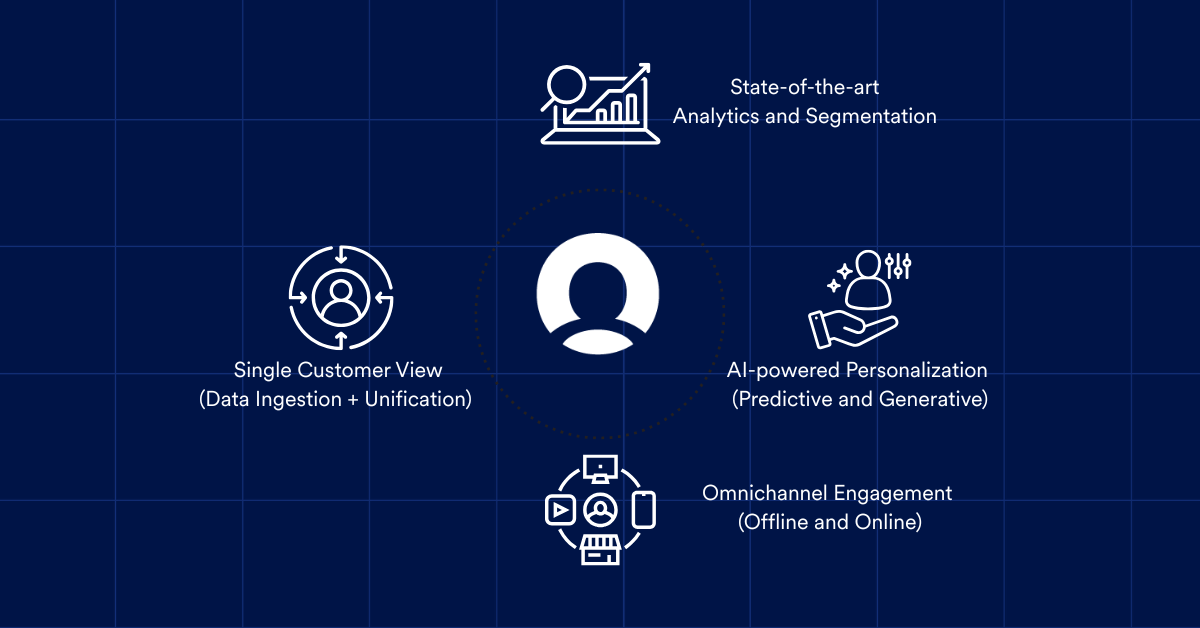
And in a market as competitive as India, loyalty isn’t given—it’s earned.
Actionable Playbook: How Brands Can Drive Meaningful Customer Engagement
It’s easy to talk about engagement, but what actually works? Here’s a clear breakdown of what brands need to do to turn casual buyers into lifelong customers.
1. Go Beyond Personalization—Deliver Relevance
🚫 Don’t: Blast generic discounts to every user.
✅ Do: Use behavioral data to send the right offer at the right time.
Example: Instead of a mass email saying “20% off sitewide!”, send a personalized notification:
“Hey [Name], your favorite [product] is back in stock—grab it now with an exclusive 10% discount just for you!”
2. Meet Customers Where They Are
🚫 Don’t: Rely only on one platform (like email or an app).
✅ Do: Engage across WhatsApp, SMS, push notifications, and even in-store experiences.
Sandeep Varaganti puts it best:
“Customers don’t think in channels. Whether they’re on WhatsApp, a website, or a physical store, they expect a seamless experience.”
Translation? A customer should be able to:
- Start their journey on WhatsApp
- Browse on the app
- Complete their purchase in-store—all without friction.
3. Make Every Interaction Feel Like a Conversation
🚫 Don’t: Spam customers with robotic messages.
✅ Do: Use conversational engagement that feels human.
Example: Instead of a cold “Your order is shipped” message, try:
“Good news, [Name]! Your order is on the way. Need any help? Reply here!”
A slight shift in tone makes the difference between yet another notification and a brand people trust.
4. Prioritize Retention Over Acquisition
🚫 Don’t: Spend 10x more on acquiring new customers than keeping existing ones.
✅ Do: Focus on repeat purchases, engagement loops, and long-term relationships.
Winning brands don’t stop after the first sale—they keep the momentum going through:
- Replenishment reminders (“It’s been 30 days since your last purchase—need a refill?”)
- VIP customer perks (“You’ve shopped with us 5 times! Here’s an early-access pass to our new collection.”)
- Post-purchase engagement (“How did you like your order? Share your feedback and get a surprise gift!”)
5. Automate, But Keep It Human
🚫 Don’t: Over-rely on AI without human oversight.
✅ Do: Use automation for efficiency, but humanize every touchpoint.
Platforms like MoEngage help brands analyze customer behavior and trigger real-time engagement—whether it’s a reminder, a special offer, or even just a “Hey, we miss you” nudge.
Because at the end of the day, loyalty isn’t built on transactions—it’s built on trust.
How MoEngage Powers Intelligent Customer Engagement
Now that we’ve covered the “what” and “how” of customer engagement, let’s talk about execution. Knowing what needs to be done is one thing, but actually implementing it—at scale—is where most brands struggle. This is where MoEngage comes in.
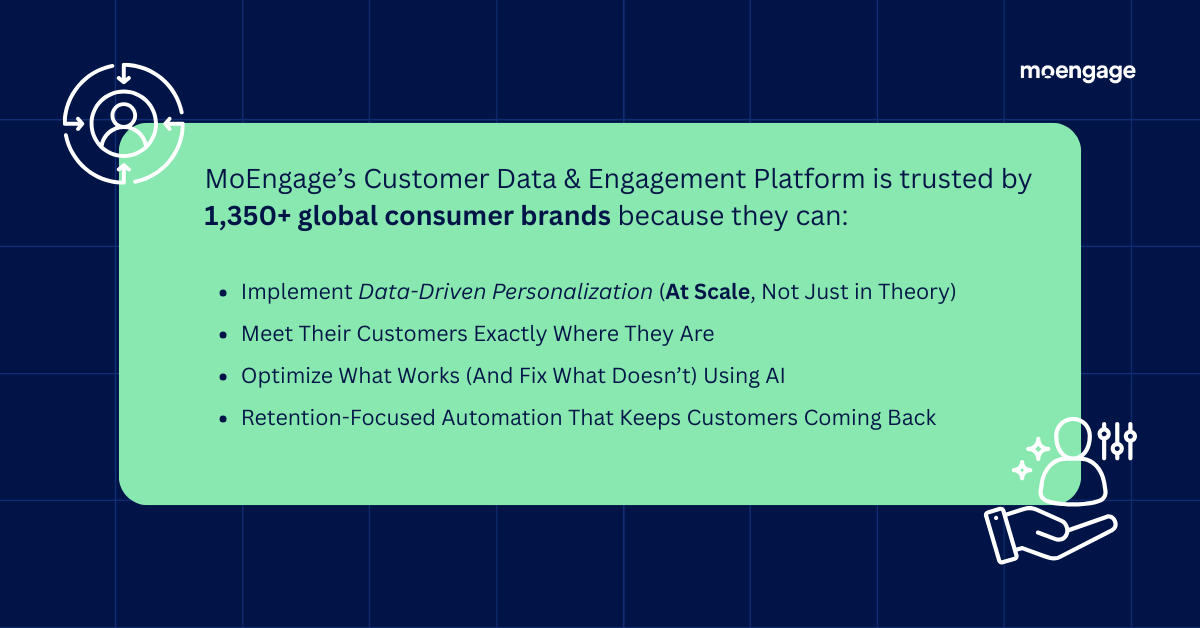
Imagine a system that doesn’t just send messages but actually understands customer behavior, anticipates needs, and drives action in real time. That’s the power MoEngage brings to modern brands.
1. Data-Driven Personalization (At Scale, Not Just in Theory)
Most brands talk about personalization but fail at execution. Sending someone their first name in an email isn’t personalization—understanding their behavior and tailoring experiences is.
MoEngage’s AI-powered segmentation allows brands to:
- Identify customer preferences based on real-time behavior.
- Send personalized recommendations at the right time.
- Optimize campaigns with AI-driven insights (not just guesswork).
For example, if a customer browses a pair of sneakers but doesn’t buy, MoEngage can automatically:
- Send them a WhatsApp reminder with a limited-time offer.
- Push a notification with user reviews to build trust.
- Trigger a discount email after 48 hours if they haven’t purchased.
The result? Higher conversions, lower drop-offs, and a seamless shopping experience.
2. Omnichannel Engagement: Meet Customers Where They Are
Like Sandeep Varaganti said, “Customers don’t think in channels.” Whether they’re on WhatsApp, email, an app, or a website, the experience should feel connected.
MoEngage enables brands to:
- Engage across multiple platforms without silos.
- Create automated workflows that trigger messages based on real-time actions.
- Ensure consistency so customers get the same experience no matter how they interact.
Example: A customer adds an item to the cart on a brand’s website, but doesn’t complete the purchase.
Instead of sending only an email reminder, MoEngage triggers a WhatsApp message and a push notification, creating multi-touchpoint engagement.
3. AI-Driven Insights: Optimize What Works (And Fix What Doesn’t)
The biggest mistake brands make is blindly running campaigns without knowing what’s working.
MoEngage’s insight-driven engagement helps brands:
- Analyze campaign performance in real-time.
- Identify where users drop off and fix bottlenecks.
- Automatically A/B test messaging to improve results.
With these insights, brands don’t just send messages—they send the right messages that actually convert.
4. Retention-Focused Automation: Keep Customers Coming Back
Acquiring new customers is expensive. Retaining them? That’s where the real revenue lies.
MoEngage helps brands build intelligent retention loops with:
- Predictive analytics—identifying at-risk customers before they churn.
- Replenishment reminders—nudging customers at the right moment.
- Loyalty-driven engagement—rewarding repeat buyers with personalized perks.
Final Thoughts: Customer Engagement Isn’t a Tactic—It’s the Growth Engine
At this point, it’s clear that brands that still treat customer engagement as a checkbox are already falling behind. The days of mass-blasting promotions and hoping something sticks are long gone. Today, it’s about timing, context, and making every interaction feel personal.
And the brands winning in this space? They’re not just selling; they’re building trust at every touchpoint. They understand that customers don’t want to be chased—they want to be understood.
That’s where MoEngage comes in. It’s not just about pushing notifications or automating campaigns—it’s about helping brands truly listen, anticipate needs, and create moments that matter. Whether it’s personalized recommendations, seamless omnichannel journeys, or AI-driven insights, MoEngage ensures that every engagement feels natural, relevant, and frictionless.
Because at the end of the day, growth isn’t about more ads or bigger budgets—it’s about how well you connect with the people who matter most: your customers.

